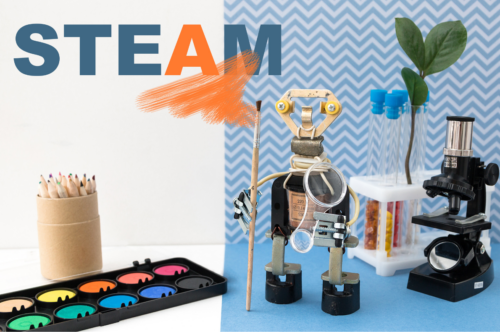
Science, technology, engineering, arts, and math (STEAM) education prepares young children for success in the 21st century. That’s why we invest in programs and initiatives that encourage STEAM learning and exploration, both in and out of the classroom.
One recent development in STEAM education that has caught our attention is the revolutionary use of bioelectronics – integrating biological materials with electronic devices – in educational settings. Scientists and educators are finding innovative ways to use bioelectronics to help children learn about biology, chemistry, and electronics, all while having fun and engaging in hands-on activities.
For example, researchers at the University of California, San Diego, have developed a biofuel cell that can generate electricity from glucose, the sugar in our blood. While this technology has potential applications in the medical field, it could also be used to power educational devices and toys for young children.
Imagine a toy car powered by the child’s blood sugar or a science kit that lets children explore the process of glucose breakdown and electricity generation. These types of activities not only teach children about important STEAM concepts but also encourage them to think creatively and develop problem-solving skills.
But it’s not just about the technology – it’s also about the educational programs and initiatives using bioelectronics to engage children in STEAM learning. For example, the BioEYES program, offered in schools nationwide, uses zebrafish to teach children about genetics and biology. The program includes hands-on activities and experiments that allow children to observe and interact with the fish while learning about scientific concepts.
At Collaboration for Children, these programs and initiatives are critical for ensuring all children have access to high-quality STEAM education. It’s essential to provide professional development opportunities for educators and caregivers so that they can effectively integrate STEAM concepts into their teaching and caregiving practices.
We’re proud to support programs and initiatives that use bioelectronics and other innovative technologies to engage young children in STEAM learning. And we’re committed to continuing to invest in these programs so that all children can develop the skills and knowledge they need to succeed in the 21st century.
read the full article here